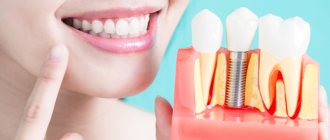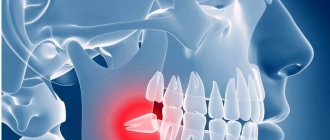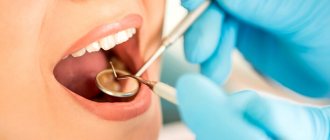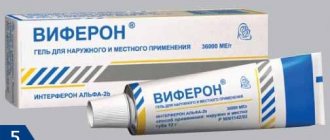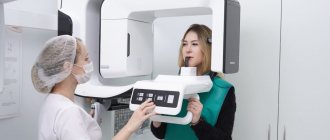A wisdom tooth is the 8th tooth in a row (figure eight) or 3rd molar, its eruption period is 17-25 years. This is a large molar, often with a complex root system. The peculiarities of its development and growth in most cases become the cause of various dental problems. Although the structure of the figure eight is characterized as an ordinary molar, its chewing function is practically absent. If a wisdom tooth hurts, it is rarely preserved. The figure eight is destroyed early, often erupts with a carious lesion, grows at an angle or in a horizontal position.
How can you tell if your wisdom tooth hurts?
Eights erupt much later than all the other teeth in the row, when the dentofacial apparatus is fully formed, and there is simply not enough space for a beginner. Due to the density of the gums and bone tissue, eruption is quite painful, accompanied by inflammation of the gums and damage to neighboring units. Pain during wisdom tooth growth is quite specific:
- Spreads along the jaw, extends to the temple, neck, head, ear, throat;
- around the figure eight there is swelling and redness of the gum tissue;
- due to pain and sore throat, swallowing is difficult;
- numbness of the jaw and severe pain indicate that the 3rd molar is growing crookedly, injuring the jaw nerve;
- it is difficult to open your mouth, especially if the wisdom tooth grows in the opposite direction from the jaw.
Each similar symptom indicates the presence of problems with the 3rd molar. You can temporarily relieve pain when wisdom teeth erupt with an analgesic. If the figure eights grow crookedly, the bite is disturbed, the cheek or gums are injured, they form in the bone tissue without erupting to the surface or appear only partially - they must be removed.
The main symptoms of teething are:
Traditionally, we will start with the most unpleasant symptoms that patients have to face. They arise as a result of the development of inflammation of the gums over a partially erupted wisdom tooth. Depending on the severity of the inflammation, only swelling and redness of the gums may be observed, or they may also be accompanied by suppuration and swelling of the soft tissues of the face (24stoma.ru).
- Swelling of the gum or cheek near the wisdom tooth – swelling of the gums around a wisdom tooth usually occurs as a result of the formation of a “hood” over it. The latter is a section of the gum mucosa that hangs over the crown of the wisdom tooth (Fig. 2). Such a hood is formed when a tooth partially erupts, and dentists call its inflammation the term “pericoronitis.” Inflammation occurs because food debris and plaque accumulate between the hood and the chewing surface of the tooth, i.e. good conditions are created for the growth of bacteria.
If you have an inflammation of the hood - 1) it is necessary to determine the feasibility of saving the tooth, 2) if there are no indications for removal, the hood must be excised, as well as anti-inflammatory treatment prescribed (see below), 3) but if there is not enough space in the dentition, excision of the hood will not solve the problem completely, because After some period of time, the gums will again partially cover the crown of the wisdom tooth, and new inflammation will develop.Important : if your gums are swollen, your wisdom tooth needs to be shown to the dentist urgently. Although with minor inflammation (only swelling and redness of the hood, without suppuration), in some cases you can cope with home remedies, which we wrote about at the end of the article. If you see that pus is oozing from under the hood, or it appears when you press the hood, you need to urgently run to a dental surgeon. In some cases, suppuration of the hood of a wisdom tooth ends with the development of phlegmon of the floor of the mouth or submandibular space.
The same applies to the situation when a wisdom tooth is cut - the cheek is swollen, and not just the gums. This also indicates the development of purulent inflammation and its spread towards the soft tissues of the cheek. In all of the above situations, you cannot self-medicate, postponing a visit to a dental surgeon, because In most cases, no antiseptic rinses or antibiotics help.
- Difficulty opening the mouth is an unfavorable symptom that indicates the progression of purulent inflammation and its transition from the hood above the wisdom tooth to the masticatory muscle. If you don’t immediately consult a dentist, your mouth will open less and less (until it closes completely). As soon as this happens, it will be possible to help the patient only in a hospital setting.
- Painful swallowing is also an extremely unfavorable symptom, which indicates the spread of purulent inflammation towards the pharynx and floor of the mouth. This is a very dangerous place for localization of inflammation, because all this can result in abscesses and phlegmon of the peripharyngeal space, as well as the area of the floor of the mouth. If this happens, you will remember the experiences you receive in the hospital for the rest of your life.
- Temperature during the eruption of wisdom teeth - if a wisdom tooth is being cut - a temperature of up to 37.5 may periodically appear even without suppuration of the hood. In general, the temperature will directly depend on the severity of inflammation, and if suppuration does occur, the temperature may be higher. A slight fever and slight discomfort in the area of the erupting wisdom tooth often appear during periods of decreased immunity, hypothermia, and against the background of colds.
- Painful sensations –
pain is characteristic of any inflammatory process, including inflammation of the hood.
As inflammation develops, pain increases. However, in some cases, a sudden cessation of pain may not be due to the cessation of inflammation, but to the fact that the pus has come out of the confined space, but not out, but into the surrounding tissues. Also, pain during the eruption of wisdom teeth may be associated with a lack of space for eruption. In this case, the erupting wisdom tooth begins to make room for itself in the dentition due to the displacement of the remaining teeth. Those. it puts pressure on the seventh tooth in front, which in turn presses on the sixth molar, etc. That is, teeth shift (almost like during orthodontic intervention). Such tooth movements can also be accompanied by pain.
Pericoronitis and laser excision of the hood: video 1-2
Why can a wisdom tooth hurt?
- Non-standard eruption
- impacted teeth formed in the jawbone, not erupted completely or partially, can be positioned horizontally or vertically. When the figure eight is placed on the side, it puts strong pressure on neighboring units, causing acute pain. - Gum hood
– dense gums can prevent teething; a “hood” of mucous tissue forms over the wisdom tooth. Bacteria and food particles begin to accumulate under it, which cannot be removed when brushing your teeth. This area is constantly injured, inflamed, and painful. An acute inflammatory process often develops into a purulent one. - The molar is rotated
around its axis - the more pronounced the rotation, the stronger the impact on the dental nerve, which causes pain in the molar itself, the adjacent unit or the entire jaw. - The cheek hurts
due to a wisdom tooth if it grows in its direction. The pain intensifies when chewing, the mucous membrane of the cheek is constantly injured and inflamed. - Caries
- the localization of the 3rd molar makes it difficult to care for it; often it is cut already with carious lesions of hard tissues, which causes pain. The sensitivity of the tooth increases, it reacts painfully to temperature and chemical stimuli. - Cyst
- due to systematic injury to the gum tissue, the molar itself, a cystic formation may form at the neck. A wisdom tooth cyst is often accompanied by serious complications - inflammation of the periodontal tissues, pericoronitis, abscess, and destruction of bone tissue.
Also, the reason that the wisdom tooth began to hurt are various dental pathologies - pulpitis, periodontitis (acute, chronic), periodontal disease. Removing the figure eight is not always justified; the doctor decides this issue individually, depending on the clinical picture. First, a comprehensive diagnosis is carried out, the doctor determines the location of the roots, assesses the condition of the jaw bone, gums around the figure eight, and the entire dentofacial apparatus.
Prevention of dental diseases
Proper prevention of dental diseases should be carried out from an early age. This will help avoid many problems that lead to constant pain, acute and chronic diseases, as well as tooth loss. Doctors recommend the following methods of prevention:
- daily oral hygiene using toothpaste and rinses;
- removing plaque in the dental office when it appears;
- timely correction of bite and incorrect position of teeth;
- regular dental check-ups.
At the Clinical Brain Institute, you can undergo a comprehensive diagnosis of headaches, as well as receive recommendations for their treatment. Our center has modern equipment that allows you to quickly make an accurate diagnosis and establish the cause of pain. It is important to follow doctors’ instructions and go through all stages of treatment - this will help get rid of dental problems, correct bite and other congenital or acquired pathologies, and also prevent their further development.
Indications for removal
- Pathological eruption of the figure eight (partial or complete retention, dystopia), accompanied by pain, chronic inflammation of the gums, destruction of adjacent molars, malocclusion, damage to the jaw joint and other problems;
- 3 molar has erupted outside the dentition, leading to crowding;
- inability to carry out treatment or prosthetics due to limited access to the dental unit;
- the presence of complications - cysts, granulomas, periostitis, periodontitis;
- orthodontic treatment - figure eights must be removed if they interfere with the installation of a corrective apparatus or prevent the teeth from taking the correct position when correcting the bite.
Carious lesion of the wisdom tooth and the adjacent “seven”
It takes a lot of effort to really clean teeth that are far from the center, so their level of hygiene usually leaves much to be desired. They do not take an active part in the chewing process, so they also do not clean themselves. In the accumulating plaque, pathogenic microflora very quickly develops, causing the need for treatment of caries. Since, due to lack of space, the “figure eight” is often located obliquely, caries also affects the adjacent tooth - in the area of their contact.
When do you need a doctor's help?
If the figure eight hurts, you should immediately consult a dentist. Consultation with a specialist is also necessary for pain of unknown etiology - squeezing, spreading over the entire jaw, occurring when chewing or opening the mouth. After examination and diagnosis, the doctor will decide what to do next with the molar. If the growth of a wisdom tooth is accompanied by swelling, redness of the gums, and acute pain, the doctor will prescribe anti-inflammatory therapy.
If eruption is difficult due to the gingival hood, an operation will be performed to excise it and drug therapy will be prescribed.
Wisdom teeth removal methods
The intervention tactics depend on the location of the 3rd molar, the degree of exposure to the gum surface, the number of roots, their confusion, and the position of adjacent teeth. Removing figure eights on the upper jaw is easier than on the lower jaw. This is due to the structure of the jaw tissue - the maxillary bone is looser, more airy, the mandibular bone is more massive and dense. Additionally, mandibular eights tend to have more tangled and developed roots.
According to the clinical picture, removal can be simple or complex. A simple extraction is performed like any other extraction - the molar is rocked with forceps and removed from the socket. Complex technology includes:
- gum incision;
- drilling a molar or sawing it into fragments;
- removing each fragment one by one;
- suturing the wound.
Stitches are removed on days 5-7
after the intervention (self-absorbable suture material can be used). The operation is performed under local anesthesia; removal under sedation (during medicinal sleep) is possible.
Treatment of wisdom teeth during pregnancy has its own nuances. Usually, the doctor limits himself to conservative therapy aimed at eliminating pain and inflammation. If possible, removal is performed after childbirth. The operation is carried out according to strict indications, if the inflammation has become purulent and threatens the health of the mother and child. For anesthesia, special drugs are used that are safe for the fetus.
At the RUTT clinic, the removal of a wisdom tooth with a complex root system and location is performed by experienced maxillofacial surgeons. This eliminates surgical complications - extensive trauma to the bone structures of the jaw, perforations, wandering root remains, postoperative fistulas, osteomyelitis, etc. Only maxillofacial surgeons have enough skills and experience to perform such interventions without complications.
Recovery after surgery
The removal of the figure eight itself is painless, since it is performed under anesthesia. But due to injury to the gums and bone socket, after the anesthetic wears off, the figure eight, or rather the periodontal tissues, hurt for several days. Painful sensations after a simple removal usually go away within 2-3 days, after a complex one they can persist for about a week. On days 2-3, swelling increases, which subsides after 2 days and the pain subsides. After the intervention, the doctor gives recommendations regarding care, nutrition, lifestyle, and prescribes drug therapy - antibiotics, painkillers, anti-inflammatory drugs, antihistamines.
